Related Research Articles

Scorpions are predatory arachnids of the order Scorpiones. They have eight legs, and are easily recognized by a pair of grasping pincers and a narrow, segmented tail, often carried in a characteristic forward curve over the back and always ending with a stinger. The evolutionary history of scorpions goes back 435 million years. They mainly live in deserts but have adapted to a wide range of environmental conditions, and can be found on all continents except Antarctica. There are over 2,500 described species, with 22 extant (living) families recognized to date. Their taxonomy is being revised to account for 21st-century genomic studies.
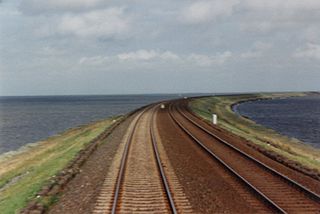
A causeway is a track, road or railway on the upper point of an embankment across "a low, or wet place, or piece of water". It can be constructed of earth, masonry, wood, or concrete. One of the earliest known wooden causeways is the Sweet Track in the Somerset Levels, England, which dates from the Neolithic age. Timber causeways may also be described as both boardwalks and bridges.

The Kinosternidae are a family of mostly small turtles that includes the mud turtles and musk turtles. The family contains 25 species within four genera, but taxonomic reclassification is an ongoing process, so many sources vary on the exact numbers of species and subspecies. They inhabit slow-moving bodies of water, often with soft, muddy bottoms and abundant vegetation.

A stinger is a sharp organ found in various animals capable of injecting venom, usually by piercing the epidermis of another animal.

The municipality and town of Jamay is located in the eastern portion of Jalisco, Mexico, at coordinates 20°17.4′N102°42.6′W, at a height of 1,530 meters (5,020 ft) above sea level. The municipality extends from 20° 25' to 20° 13' N, and from 102° 38' to 102° 44' W.
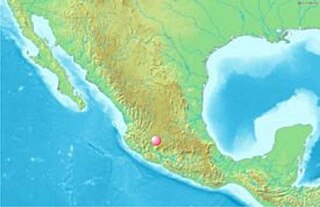
Sahuayo is a city in the state of Michoacán, in western México, near the southern shore of Lake Chapala. It serves as the municipal seat for the surrounding municipality of the same name. Sahuayo was an important center for the industry and the city always has been an active center of commerce for the Chapala lake region, specially crafts, sandals (huaraches), hats (sombreros), made by Sahuayenses. It is home to the largest huarache in the world measuring 7.45 meters long and 3.09 meters wide. The name means "turtle shaped pot" it has been called the Athens of Michoacán because of its many important poets, writers and painters. Today it is the seat for Arts Propositions Association. The city had a 2005 census population of 59,316 persons, while the municipality had a population of 61,965. The area of the municipality is 128.05 km².
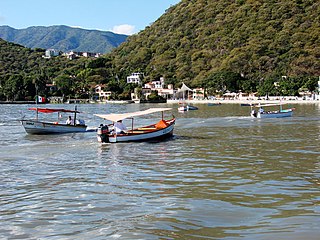
Lake Chapala is Mexico's largest freshwater lake. It lies in the municipalities of Chapala, Jocotepec, Poncitlán, and Jamay, in Jalisco, and in Venustiano Carranza and Cojumatlán de Régules, in Michoacán.
Marcos Castellanos is a municipio (municipality) in the Mexican state of Michoacán near the southern shore of Lake Chapala. The municipal seat is the city of San José de Gracia.

Chapala is a town and municipality in the central Mexican state of Jalisco, located on the north shore of Lake Chapala, Mexico's largest freshwater lake. According to the 2015 census, its population is 50,738 for the municipality. The municipality includes about 11,000 in the town of Ajijic.
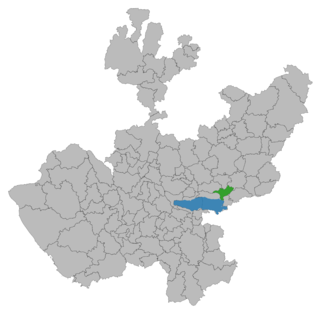
Ocotlán is a city and municipality in Jalisco, Mexico. Its industry includes furniture production.
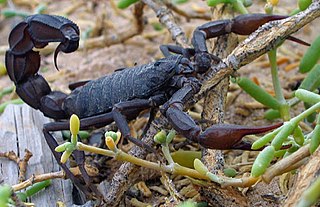
Fattail scorpion or fat-tailed scorpion is the common name given to scorpions of the genus Androctonus, one of the most dangerous groups of scorpions species in the world. They are found throughout the semi-arid and arid regions of the Middle East and Africa. They are a moderate sized scorpion, attaining lengths of 10 cm. Their common name is derived from their distinctly fat metasoma, or tail, while the Latin name originates from Greek and means "man killer". Their venom contains powerful neurotoxins and is especially potent. Stings from Androctonus species are known to cause several human deaths each year. Several pharmaceutical companies manufacture an antivenom for treatment of Androctonus envenomations.

The Lerma River is Mexico's second longest river. It is a 750 km-long (470 mi) river in west-central Mexico that begins in Mexican Plateau at an altitude over 3,000 metres (9,843 ft) above sea level, and ends where it empties into Lake Chapala, Mexico's largest lake, near Guadalajara, Jalisco. Lake Chapala is the starting point of Río Grande de Santiago, which some treat as a continuation of the Lerma River. In combination, the two are often called the Lerma Santiago River. The Lerma River is notorious for its pollution, but the water quality has demonstrated considerable improvement in recent years due mostly to government environmental programs and through massive upgrading projects of sanitation works.
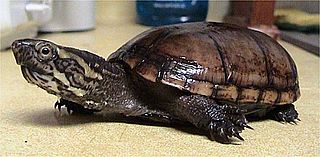
Kinosternon is a genus of small aquatic turtles from the Americas known commonly as mud turtles.

Ajijic is a town about 4.8 kilometres (3.0 mi) west from the town of Chapala, part of the municipality, in the State of Jalisco, Mexico. It is situated on the north shore of Lake Chapala, surrounded by mountains. Ajijic enjoys a moderate climate year-round. The population of Ajijic was 11,439 as of the 2020 census.

A scorpion sting is an injury caused by the stinger of a scorpion resulting in the medical condition known as scorpionism, which may vary in severity. The anatomical part of the scorpion that delivers the sting is called a "telson". In typical cases, scorpion stings usually result in pain, paresthesia, and variable swelling. In serious cases, scorpion stings may involve the envenomation of humans by toxic scorpions, which may result in extreme pain, seriousness illness, or even death depending on the toxicity of the venom.

The Oriental Basin, also known as the Libres-Oriental Basin, Oriental-Serdán Basin or San Juan Plains is an endorheic basin in east-central Mexico. It covers an area of 4,958.60 square kilometers, lying in the states of Puebla, Tlaxcala, and Veracruz.
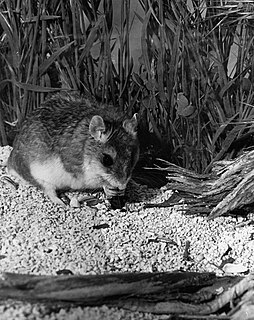
Grasshopper mice are rodents of the genus Onychomys, occurring in North America. They feed on insects and other arthropods.
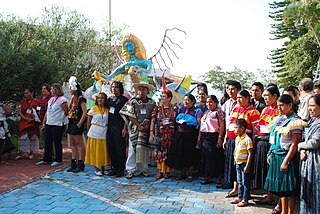
Feria Maestros del Arte is a non profit organization and annual three-day event held to support Mexican handcrafts and folk art in Chapala, Jalisco, Mexico. Unlike other fairs of this type, invited participants are not charged booth fees or percentages, and are even afforded transport and accommodations with area families. The Feria has grown from thirteen artisan participants to over eighty, and the organization is legally recognized in Mexico and the United States.
References
- 1 2 "Lake Chapala". Guadalajara Office of Visitors & Conventions. Retrieved 13 July 2019.
Coordinates: 20°15′4″N103°10′13″W / 20.25111°N 103.17028°W